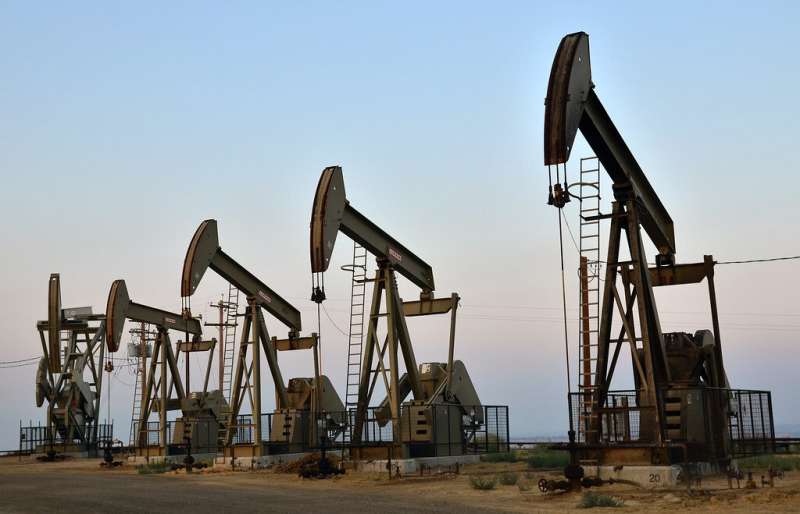

The global impacts of Russia’s invasion of Ukraine have exposed vulnerabilities in U.S. energy security and undercut the myth that the United States, or any other major manufacturing economy, is truly energy independent yet, according to an analysis by researchers at the energy nonprofit RMI and Duke University.
While the U.S. domestically produces 75% of its crude oil supply and 90% of its natural gas supply and only imports a comparatively small amount of Russian oil—now banned as a punitive measure against Moscow—it remains inextricably tied to Russian energy through highly globalized supply chains that rely on Russian fuel to produce goods for the U.S. market, the analysis shows.
“Russia can’t sell its oil to the U.S. or Europe anymore, but it can still sell it to other major economies, such as India and China, where it’s being used to make products that we continue to import,” said Lincoln Pratson, Gendell Family Professor of Energy and Environment at Duke’s Nicholas School of the Environment.
“We’ve embargoed Russia’s oil, but we’re still indirectly buying its crude through these products,” Pratson said.
This weakens the sting of our sanctions and presents U.S. policymakers with a conundrum, he said. If we import a product instead of making it domestically, it frees up part of our energy budget for use elsewhere, but at the same time, the imported product ties our energy security to that of the exporting nation, which may depend on Russia for its fuel.
“The question becomes whether the gains from producing something else with that energy are worth the increased energy risk the import poses,” said Jun Ukita Shepard, senior associate for strategic analysis and engagement and U.S. programs at RMI, formerly known as the Rocky Mountain Institute.
Recent U.S. policy actions such as oil sanctions and the removal of Russia’s favorable trade status target only part of the risk, Shepard said. “They’re not really effective at addressing risks posed by the indirect, or embedded, Russian energy contained in many of the products we import from other countries.”
The new analysis, which Shepard and Pratson published May 25 in Nature Energy, evaluates three ways the U.S. can mitigate its exposure to these risks.
The first is the “Buy American” approach, in which we substantially reduce demand for imported goods and services. This would require a dramatic lifestyle shift for U.S. consumers, which likely limits its potential effectiveness as a sole approach, Shepard said.
A second, related option is the “Made in America” approach, in which we invest in increased domestic production of key commodities. While promising, it too has a shortcoming, because nearly all domestically produced goods rely on imports somewhere along their supply chains. This is especially true for key commodities like batteries and semiconductors, Shepard noted. To achieve energy independence using this approach, we’ll need to ramp up investments in innovative product design and find ways to use only domestically sourced raw materials, such as replacing lithium-ion batteries, which require minerals not mined in the U.S., with domestically produced sodium-sulfur batteries.
A third option, which could be used alone or in conjunction with the first two, is to secure U.S. supply chains by investing in renewable energy technologies abroad as well as at home.
This would boost the long-term energy security of the countries we rely on for raw materials or key commodities, Pratson said, because nearly all nations can produce renewable energy domestically. And while clean energy technologies require an upfront investment, their energy production isn’t subject to the type of extreme supply chain volatilities sometimes seen in oil and gas markets, such as those triggered by the war in Ukraine.
“More than 100 countries have major manufacturing economies but only a handful of nations, including Russia, produce and export most of the energy that powers these economies,” Pratson said. To achieve U.S. energy independence in such a highly globalized context, we need to look beyond national borders.
“The most secure and economically efficient way to ensure U.S. energy independence is to support the domestic capabilities of the supply chains we depend on,” Shepard said. “Simply put, achieving U.S. energy security requires all countries to achieve energy security.”
Import tariffs: An alternative to a European energy embargo against Russia
Jun Ukita Shepard et al, The myth of US energy independence, Nature Energy (2022). DOI: 10.1038/s41560-022-01053-2
Duke University
Citation:
Ukraine War’s supply chain impacts bust myth of US energy independence (2022, June 13)
retrieved 13 June 2022
from https://phys.org/news/2022-06-ukraine-war-chain-impacts-myth.html
This document is subject to copyright. Apart from any fair dealing for the purpose of private study or research, no
part may be reproduced without the written permission. The content is provided for information purposes only.